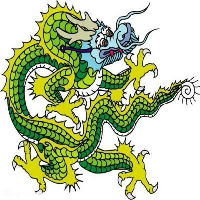How to change the declarative sentence?
How to change the declarative sentence?
The first is to change the person, remove the colon and double quotation marks, and change them to commas.
1. Change the affirmative word in the rhetorical question into the negative word, or vice versa.
2. Remove the rhetorical particles from the rhetorical sentences.
3. Remove the question particle at the end of the sentence and change the question mark to a full stop.
A declarative sentence is a sentence pattern that states a fact or expresses the speaker's opinion. There are two kinds of declarative sentences, one is affirmative declarative sentences, the other is negative declarative sentences. These two sentence patterns are also called affirmative sentences and negative sentences.
A declarative sentence is a sentence pattern that states facts. The sentences we use in our daily life are generally declarative sentences. In declarative sentences, the verb is in the second place, and the first place is the subject or adverbial, or even the object.
Examples of declarative sentences:
1. This picture is painted by my friend Li Xue.
2. If you don't review carefully, your exam results will not be good.
3. We can't turn a blind eye to some students' performance of disobeying class discipline.
4. If you haven't finished your homework, you are not qualified to go to the movies.
5. Wang Yi's outstanding achievements are inseparable from her efforts.
6. We should not be intimidated by setbacks.
7. Without the sacrifice of revolutionary martyrs, there would be no happy life for us today.
8. I think you did the wrong thing.
9. He said you were his friend.
10. Never forget to be a law-abiding citizen.
How to change declarative sentences
Methods and techniques for modifying declarative sentences:
The first is to change the person, remove the colon and double quotation marks, and change them to commas.
1. Change the affirmative words in rhetorical questions into negative words, or vice versa.
2. Remove the rhetorical particles from the rhetorical sentences.
3. Remove the question particle at the end of the sentence and change the question mark to a full stop.
Five basic sentence patterns of declarative sentences:
1. Subject+linking verb+predicative.
2. Subject+predicate (intransitive verb).
3. Subject+predicate (transitive verb)+object.
4. Subject+predicate (transitive verb)+indirect object+direct object.
5. Subject+predicate (transitive verb) v+object+object complement.
Methods and techniques for modifying declarative sentences:
1. Change affirmative words into negative words or negative words into affirmative words in rhetorical questions.
2. Remove the rhetorical modal particles ("How", "How", "Do", etc.) from the rhetorical sentences.
3. The interrogative particles (ne, ma, etc.) at the end of the sentence are removed and the question mark is replaced by a full stop.
4. For example, "How can we break our promise?" When changing to a declarative sentence, change "can" to "can't", remove "why" and "do", change the question mark to a full stop, and change the declarative sentence into: "We can't break our promise."
Declarative Sentence is a sentence pattern that states a fact or a speaker's opinion. Declarative sentences can be divided into positive declarative sentences and negative declarative sentences, which are called the Affirmative Sentence and the Negative Sentence for short.
How to change declarative sentences
You can change a sentence into a declarative sentence by changing punctuation, person, interrogative words, auxiliary words, etc.
1、 Methods of changing declarative sentences
1. Change punctuation: change question mark, exclamation mark, etc. into full stop. You can also remove the colon. For example, Lu Su said to me, "You found it yourself. How can I help you?" Instead, Lu Su said to me, "You found it yourself. How can I help you?"
2. Change the person: "I" to "he (she)"; Change "you" to specific person. For example, mother said to Xiao Ning, where did you go yesterday? My mother told me where I went yesterday.
3. Remove the question words: remove the question words, question marks and exclamation marks at the end of the sentences such as "ma, ni, ah" in the question sentences and rhetorical questions. For example, how can we not be moved by the magnificent scenery of Cangshan Mountain and Erhai Lake? It is changed into: How can we not be moved by the magnificent scenery of Cangshan Mountain and Erhai Lake.
4. Removal of auxiliary words: remove the auxiliary words such as "how" and "why" from the interrogative sentences and rhetorical questions. For example, don't I want to study hard and find a good job? I want to study hard and find a good job.
2、 Introduction to sentence patterns
1. An interrogative sentence is a sentence pattern that asks the other person a question that he or she does not know the answer to and requires the other person to answer it. Interrogative sentences are characterized by their directness and crispness, and their feelings are basically questions or interrogations.
2. The rhetorical question is a rhetorical method, which uses the tone of rhetorical question to express the positive meaning. The answer is already contained in the question, and does not need the other party to answer. Unlike interrogative sentences, rhetorical questions have given the answer to the sentence, which is why the main purpose of rhetorical questions is not to express questions, but to express the feelings behind them, such as expressing gratitude, appreciation, reprimand, anger and so on.
3. A declarative sentence is a sentence pattern that states a fact or the speaker's opinion. The declarative sentences are divided into positive declarative sentences and negative declarative sentences. The declarative sentence is one of the most commonly used sentences. It can express everything in the world and express all thoughts and feelings.
3、 Method of changing interrogative sentences into declarative sentences
1. The purpose of changing interrogative sentences into declarative sentences: because interrogative sentences only express questions or questions, the purpose of changing interrogative sentences into declarative sentences is mostly to report the interrogative sentences, that is, to report another person's questions to others.
2. Method: The method of changing interrogative sentences into declarative sentences is mainly to change the person, punctuation and interrogative words. Among them, changing the person is the key, because it is necessary to describe to others.
For example, the original sentence was "Do you know when the super delicious barbecue restaurant will open?" He asked me if I know when the super delicious barbecue restaurant will open. “
4、 Method of changing rhetorical questions into declarative sentences
1. The purpose of changing rhetorical questions into declarative sentences: since the answers of rhetorical questions are contained in rhetorical questions, rhetorical questions actually have the function of stating facts. Therefore, the purpose of rewriting declarative sentences is mainly to exercise language or know facts.
2. Method: To change rhetorical questions into declarative sentences, you only need to change the interrogative words, interrogative auxiliary words, and punctuation, without changing the person.
For example, the original sentence is "Don't you know that the super delicious barbecue restaurant doesn't open until 6:00 p.m., there are too many people." The statement is "You know that the super delicious barbecue restaurant doesn't open until 6:00 p.m., there are too many people."
Methods of changing declarative sentences into rhetorical questions:
The method of changing declarative sentences into rhetorical questions: original sentence+interrogative words (how can you; can you?)+no+modal particles (?; can you?)+question mark. For example, the students had to find a way to overcome this difficulty—— How could the students not figure out a way to overcome this difficulty?
How to change declarative sentences
How to change questions into statements:
1. Change affirmative words into negative words or negative words into affirmative words in rhetorical questions
2. Remove the rhetorical modal particles ("how", "how", "do", etc.) from the rhetorical sentence
3. Remove the interrogative particle (?,?, etc.) at the end of the sentence and change the question mark to a full stop
For example, how can we break our promises? When changing into a declarative sentence, change "can" to "can't", remove "how", remove "do", and change the question mark to a full stop. The declarative sentence is: We can't break our word. Another example is: Ouyang Hai's heroic deeds of sacrificing his life to stop a horse startled us, why don't they move us? When changing the sentence into a declarative sentence, change the word "no order" to "order", remove the word "how", remove the word "do", and change the question mark to a full stop. The declarative sentence changed into: Ouyang Hai's heroic deed of sacrificing his life to stop the horse startled us, which moved us. Many children are always confused when changing the sentence pattern, and do not understand what this question is about to ask my baby to do? Today, let's share in detail~After reading it, parents should collect it for children!
Change sentence pattern
Changing sentence pattern: It is to change the expression form of a sentence from one form to another according to certain requirements while keeping the original content unchanged.
The Transformation of Declarative Sentence, Ba Sentence and Bei Sentence
The declarative sentence is basically the same as the "bei" and "ba" sentences, but the sentence pattern has changed, and the use occasions and effects are also different.
For example:
A big drop of rosin enveloped the flies and spiders. (declarative sentence)
A big drop of rosin enveloped the flies and spiders. (Ba sentence)
The flies and spiders are wrapped in a big drop of rosin. (Bei sentence)
It can be seen from the above example.
The subject of the ba sentence is the performer of the action.
The subject of a passive sentence is the person who performs the action.
Specific methods of transformation
1. Find out the two titles (who or what) in the statement and determine the relationship between the executor and the executor.
2. Ba sentence: To emphasize the executor, turn the executor (e.g., a big drop of rosin) to the beginning of the sentence as the subject, and then add the word "ba" and the executor to the end of the sentence.
3. Sentence with the word "bei": to emphasize the person to be executed, turn the person to be executed (e.g. flies and spiders) in the sentence to the beginning of the sentence as the subject, and then add the word "bei" and the person to be executed to form a sentence with the word "bei".











